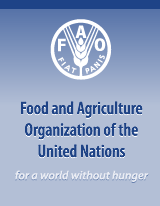Invasive forest trees
While several international and national programmes target the issue of alien invasive species, especially in forest and fragile ecosystems, there is scant data on the phenomenon of introduced forest trees turned naturalized or invasive. The issue is all the more important since the global movement of forest reproductive material, either through intentional or unintentional ways, is likely to increase in the future.
Definitions and impact of invasive species are still debated and need reviewing in the context of forest management, a number of initiatives, programmes and activities have been initiated, including at FAO. Most programmes focus on damage caused to local forest ecosystems, or to particular species or group of species, by a given pest, over a period of time. There is an overall lack of information on the issue globally. Information sharing is necessary in the planning and implementation of any strategy for the management of invasive species. Other sectors, such as fishery, have had to deal with issues of invasiveness and have developed risk assessments methods and management strategies which can be adapted for forestry.
A global literature review, complemented by in-depth regional and national analyses, shows that the forestry sector is not always aware of the issue. There is a need to raise awareness of the actors involved, and to strengthen a biosecurity perspective when introducing, testing and managing exotic forest resources.
FAO Publication on invasive forest trees
With the financial support of the FAO-Netherlands Partnership Programme, the FAO Forestry Department has launched a number of fact-funding studies to assess the extent and intensity of invasiveness by forest trees. These studies are now available on this site and published as working papers available below.
There are discussions underway to extend the work to include case studies in Kenya and Mali.
Data on reported introduced, naturalized and invasive tree species by country is available in our Invasive tree species database.
Programme on Prosopis spp.
Legume tree Prosopis spp. has been introduced in many countries of the world, especially in dry and semi-arid zones, because of its capacity to survive in harsh environments and its potential in the restoration of degraded lands. While the environmental, social and economic benefits brought by the tree are widely acknowledged, there is a growing awareness of its limitations, especially under poor management and control, or in sensitive and fragile areas. FAO has launched a cross-cutting, holistic approach to the issue, aimed at documenting the benefits brought by and drawbacks of the tree. A summary of the programme is availablehere.Other links on invasive forest trees
- IUCN-The World Conservation Union
- CAB International
- GISP-The Global Invasive Species Programme
- The Invasive Woody Plants in the Tropics Research Group, University of Wales.
- Pierre Binggeli's Homepage.
- Binggeli, P., Hall, J.B. and Healey, J.R. 1998. An overview of invasive woody plants in the tropics. School of Agricultural and Forest Sciences Publication Number 13, University of Wales, Bangor.
- Binggeli P. 1996. A taxonomic, biogeographical and ecological overview of invasive woody plants. J. Veg. Sci. 7, 121-124.
